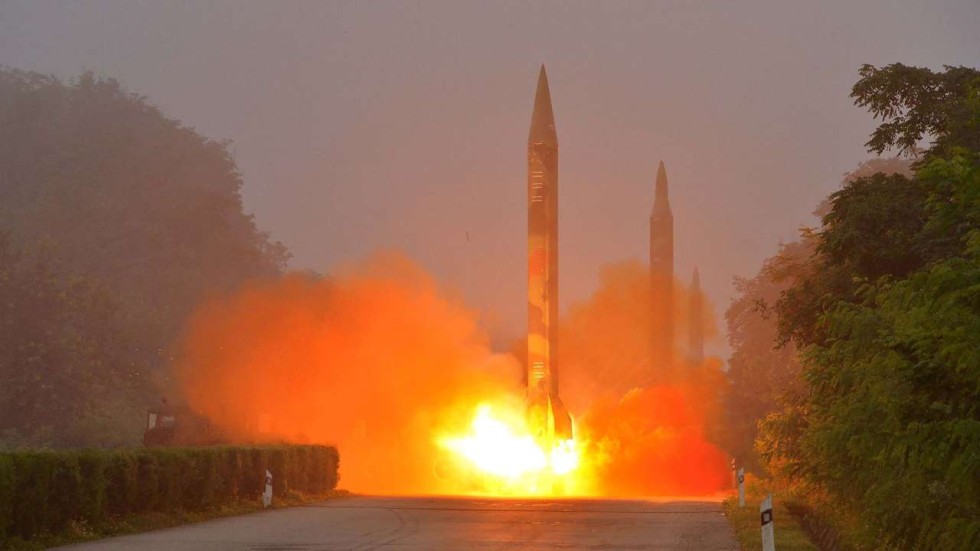The missiles were fired from a region south
of the capital Pyongyang just after noon local time (0300 GMT) and flew
about 1,000 km (600 miles), hitting Japan's air defence identification
zone, the South's Office of the Joint Chiefs of Staff said. "We
are still analysing details but this is a grave threat to our nation's
security, and we express deep concern," the Japan Defence Ministry said
in a statement. The missile
launches were the latest in a series of launches by the isolated North
this year in violation of U.N. Security Council resolutions, supported
by China, that ban all ballistic missile-related activities by the
North. Pyongyang rejects the ban as infringing its sovereign right to pursue a space programme and self defence. Shortly
after the missile launches, South Korean President Park Geun-hye and
Japanese Prime Minister Shinzo Abe met on the sidelines of the G20
summit and agreed to cooperate on monitoring the situation, a Japanese
statement said. The South's
military said the missiles were medium-range Rodong-class, launched as a
show of force timed to coincide with the G20 summit. In
2014, the North fired two Rodong medium-range missiles just as Park and
Abe were meeting U.S. President Barack Obama at the Hague to discuss
responding to the North's arms programme. The
latest missiles were launched from a region called Hwangju and came
just hours after the leaders of South Korea and China met on the
sidelines of the G20 summit in Hangzhou, China. South
Korea's Park told Chinese President Xi Jinping that the North's fourth
nuclear test and its ballistic missile launches this year threatened
regional peace and posed a challenge to South Korea's ties with China,
Yonhap news agency reported earlier. During
the meeting, Xi reaffirmed China's commitment to realising the
denuclearisation of the Korean peninsula, China's state news agency
Xinhua reported on Monday. Xi
also told Park that Beijing opposed the proposed deployment of a THAAD
anti-missile system in South Korea, which Seoul and the United States
have said is designed to counter an increasing missile threat from North
Korea. Park said that a THAAD
deployment would not threaten any other country's security interests and
would not be needed if the North's nuclear issue was resolved, Yonhap
news agency said. In July, the
North launched three missiles in a single day from the western region
that flew across the country and into the sea off its east coast, flying
about 500 km and 600 km (300-360 miles).
Filter
-
Announcements
(۶۴) -
Character
(۱۹) -
Areas America - Europe
(۳۴۰) -
Areas of West Asia - Africa
(۲۲۵) -
The Asian - Pacific
(۷۳) -
Scientific Meeting
(۸) -
Articles and reports
(۳۶۷) -
Publications
(۹۹) -
Interviews
(۳۳) -
Internal think tank
(۲۲) -
Foreign think tanks
(۵۶) -
News and Views section English
(۲۶۱)
Latest Articles
ارسال نظر آزاد است، اما اگر قبلا در بیان ثبت نام کرده اید می توانید ابتدا وارد شوید.


